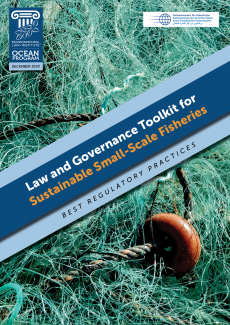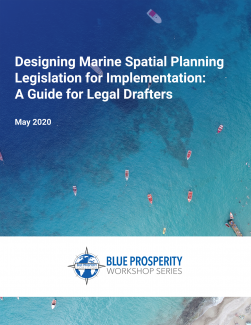ELI Ocean Council
The Ocean Program at ELI focuses on cooperating with institutions and countries to shape a legal framework that promotes long-term conservation of the marine environment and a sustainable, transparent, and inclusive use of ocean wealth. In that process, the ELI Ocean Program has created an expert Advisory Board, the ELI Ocean Council. The ELI Ocean Council is an international group of ocean resources management experts that helps ELI attorneys keep their efforts focused on key ocean governance topics.
New Report Offers Regulatory Guidance for Small-Scale Fisheries
(Washington, D.C.): The future of the ocean, and that of the planet, depends on sustained, effective changes to natural resources governance. Over the last couple of decades, ocean stewardship efforts have turned to focus on several key approaches, such as the creation and enforcement of marine protected areas (MPAs) and the implementation of sustainable fisheries practices, including small-scale fisheries (SSF) co-management.
Law and Governance Toolkit for Sustainable Small-Scale Fisheries: Best Regulatory Practices

Over the last couple of decades, ocean stewardship efforts have turned to focus on several key approaches, such as the implementation of sustainable fisheries practices, including small-scale fisheries (SSF) co-management. This Toolkit presents a methodology for assessing the reform needs to strengthen SSF governance, along with examples of model regulatory language for the core governance elements.
Building Bridges: Connecting the Overlapping Goals, Resources, and Institutions of Gulf of Mexico Restoration and Conservation

On April 20, 2010, an explosion rocked the Deepwater Horizon mobile offshore drilling unit. Eleven crewmen lost their lives in the blast, and the rig burned for the next thirty-six hours. Then, forty-one miles off the southeast coast of Louisiana, the Deepwater Horizon sank. Back at the wellhead, a quarter-mile away and 5,000 feet beneath the surface of the Gulf of Mexico, the environmental disaster was just beginning.
New Guide Offers Best Practices For Drafting Marine Spatial Planning Legislation
(Washington, D.C.)— Countries are increasingly turning to marine spatial planning to assess and organize present and future uses of their ocean environments. While resources on how to create a marine spatial plan are plentiful, little attention has been paid to how countries can give their marine spatial plans the force of law.
Contact Us - Marine Protected Areas
Please feel free to
Designing Marine Spatial Planning Legislation for Implementation: A Guide for Legal Drafters

Ocean and coastal states around the world are increasingly seeking to better utilize and benefit from their ocean environments, which can be vast in comparison to their land areas. Conflicting human uses, a changing climate, and a desire to ensure long-term sustainability compound the challenge to grow a robust “blue economy.” Consequently, countries are turning to marine spatial planning as a comprehensive management tool to assess and organize present uses of their ocean environments and map for future uses.